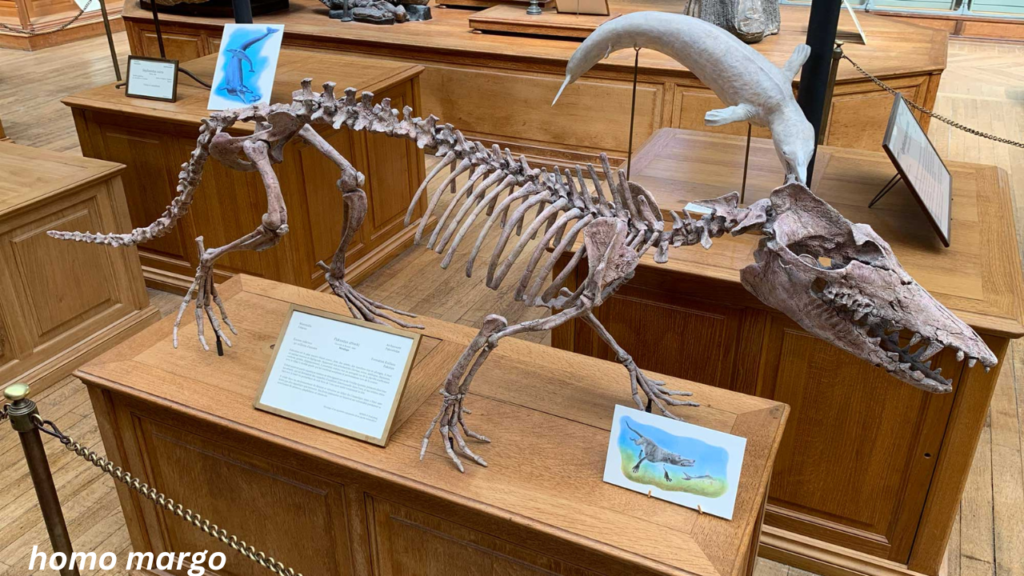
homo margo
The search for humanity’s origins has long intrigued scientists, anthropologists, and curious minds alike. Over the years, a multitude of discoveries have helped trace the complex evolutionary history of humans, revealing various species that served as links between modern humans (Homo sapiens) and our ancient ancestors. One of the more enigmatic and lesser-known species in this lineage is Homo margo. Although it has not received the same level of attention as other species like Homo erectus or Neanderthals, Homo margo offers critical insights into the evolutionary journey that led to the development of Homo sapiens. In this article, we will delve into the origins, characteristics, and significance of Homo margo, shedding light on its place in human evolution.
Understanding Homo Margo
Homo margo is a species of archaic human that existed during the Middle Pleistocene period, approximately 400,000 to 300,000 years ago. Despite being somewhat obscure in the public eye, it is an essential figure in studying human evolution. Fossils attributed to Homo margo have been discovered in various locations, primarily in Africa and parts of Eurasia. However, much about this species remains unclear due to the limited number of fossils available for study.
The name Homo margo itself is derived from Latin, with “Homo” meaning human and “margo” meaning margin or boundary. This name reflects the species’ position on the periphery of the human evolutionary tree, existing in a transitional state between earlier human species like Homo erectus and the more advanced Homo sapiens.
The Fossil Evidence: What We Know

The evidence for Homo margo comes primarily from fossilized remains found in various parts of the world. These fossils are fragmentary and sparse, but they provide vital clues about this ancient human species’ physical characteristics and behaviours. Early discoveries in Africa yielded partial skulls and limb bones, which suggested that Homo margo possessed traits characteristic of both earlier Homo species and later, more advanced humans.
The cranial structure of Homo margo shows similarities to Homo erectus, with a pronounced brow ridge and a relatively small brain compared to modern Homo sapiens. However, the skull exhibits several features that suggest increased brain size, a crucial trait in the evolution of modern humans. These features may indicate that Homo margo was one of the first species to exhibit a more complex brain structure, laying the groundwork for the cognitive advancements seen in later species like Homo sapiens.
Other skeletal features suggest that Homo margo had a more upright posture and a more refined tool-making ability than its predecessors. These adaptations would have been beneficial for survival in the Middle Pleistocene’s increasingly competitive environments, where climate change and competition from other species likely played a role in shaping evolutionary pressures.
Homo Margo and Tools
One of the most fascinating aspects of Homo margo is its use of tools. Evidence suggests that this species could make and use various tools, which were essential for hunting, foraging, and other survival tasks. The tools discovered alongside Homo margo fossils appear to be more advanced than those used by earlier Homo species but not as sophisticated as those used by later species like Homo sapiens.
These tools were likely made using flint and other stones, shaped into sharp-edged implements that could be used for cutting, scraping, and processing food. The fact that Homo margo was using tools suggests a level of intelligence and problem-solving ability that set it apart from earlier hominins. This represents a critical step in the development of human culture and technology.
Evolutionary Significance
Homo margo is believed to be an essential part of the evolutionary chain that led to the emergence of modern humans. While not a direct ancestor of Homo sapiens, it is thought to have shared a common ancestor with Homo sapiens and Homo neanderthalensis. The species represents a key stage in human evolution, characterized by a mix of archaic and more modern traits.
One of the most significant aspects of Homo margo’s evolutionary journey is its potential to serve as a bridge species between the earlier Homo erectus and the later Homo sapiens. The increase in brain size, advanced tool use, and complex social structures may have helped Homo margo to adapt to changing environments, giving it an edge in the struggle for survival during a period marked by climate change and competition from other species.
It is believed that Homo margo may have eventually evolved into, or interbred with, other species that would later give rise to modern humans. This would place it at a crucial juncture in human evolution, helping to shape the trajectory of our species.
The Mystery of Homo Margo’s Extinction
As with many extinct species, the reasons for the disappearance of Homo margo are not fully understood. Several hypotheses could explain its eventual extinction. Some researchers suggest that environmental changes during the late Middle Pleistocene may have been a significant factor. Shifting climates and the onset of ice ages likely disrupted ecosystems and made survival increasingly difficult for many species, including Homo margo.
Another possibility is that Homo margo faced competition from other human species, such as Homo sapiens and Homo neanderthalensis. As these more advanced species evolved, they may have outcompeted Homo margo for resources, eventually leading to its extinction. Interbreeding between species might also have played a role, with Homo margo contributing to the genetic pool of other Homo species but ultimately disappearing as a distinct entity.
While these explanations remain speculative, they underscore human evolution’s complex and multifaceted nature. The extinction of Homo margo serves as a reminder of the fragility of species and the constant pressures exerted by the environment and other organisms.
The Role of Homo Margo in Human Evolution
Despite the relatively limited evidence available, Homo margo plays a crucial role in our understanding of human evolution. Its mix of primitive and advanced traits offers a glimpse into the transition from earlier human ancestors to the more sophisticated Homo sapiens. By studying this species, scientists can better understand how early human ancestors adapted to their environments, developed new survival strategies, and evolved.
Homo margo also provides valuable insights into the development of the human brain, tool-making abilities, and social structures. These factors were pivotal in shaping the cognitive and cultural advancements that define modern humans today. As we continue to study ancient human species, Homo margo may yet reveal more secrets about our shared heritage and the evolutionary journey that led to Homo sapiens.
Conclusion
The discovery of Homo margo marks an exciting chapter in the story of human evolution. While much of the species remains shrouded in mystery, the evidence we have suggests that Homo margo was an important transitional species, bridging the gap between earlier human ancestors and modern humans. Its role in developing human intelligence, social structures, and tool-making abilities cannot be overstated.
FAQs
What is Homo Margo, and when did it live?
Homo margo is an extinct human species that lived during the Middle Pleistocene period, around 400,000 to 300,000 years ago. It is believed to have been a transitional species between Homo erectus and modern humans (Homo sapiens).
What were the physical characteristics of Homo Margo?
Fossils of Homo margo suggest it had a combination of traits from earlier human species, such as Homo erectus, including a pronounced brow ridge and smaller brain size. However, it also displayed features suggesting increased brain capacity and advanced tool-making abilities.
How did Homo Margo survive in its environment?
Homo margo relied on its ability to create and use tools, which were essential for hunting, foraging, and survival. It also adapted to environmental changes, though it eventually faced competition from other species like Homo sapiens and Neanderthals.
Was Homo Margo a direct ancestor of Homo sapiens?
While Homo margo was not a direct ancestor of Homo sapiens, it shared a common ancestor with both Homo sapiens and Homo neanderthalensis. It played a crucial role in the evolutionary process that led to the emergence of modern humans.
Why did Homo Margo become extinct?
The extinction of Homo margo may have been caused by environmental changes, competition from other species, or interbreeding with other Homo species. However, the exact cause of its disappearance remains unclear due to the limited fossil evidence.
You May Also Read: https://bunkralbum.co.uk/sankkucomplex/





